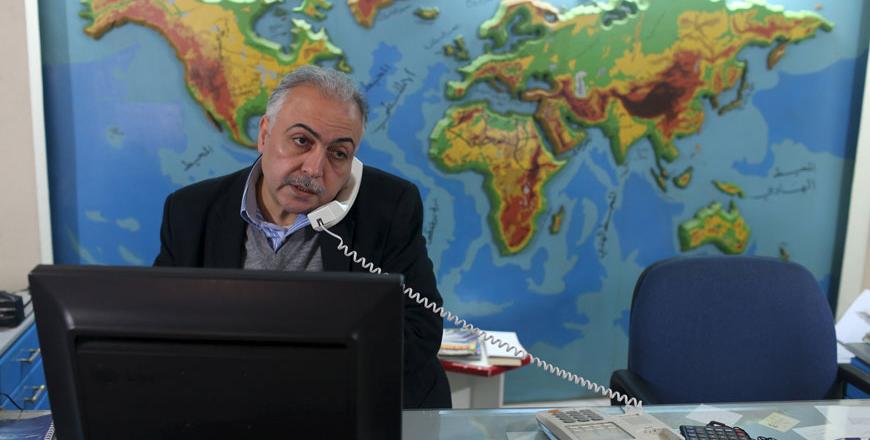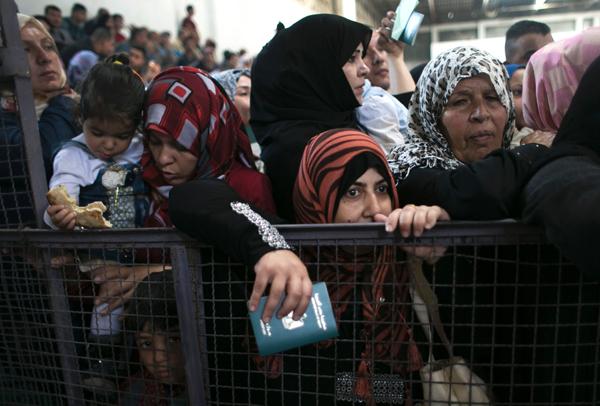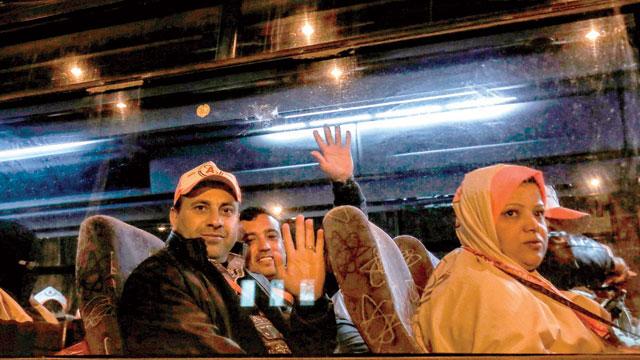You are here
After ceasefire, Gazans dream of reopened airport
By AFP - Sep 04,2014 - Last updated at Sep 04,2014

DAHANIYA, Palestinian Territories — Standing in front of the crumbling control tower of Gaza’s devastated airport, one-time air traffic controller Anis Arafat dreams of the day planes will land and take off here again.
Re-opening this airport, closed since 2001, and ending Gaza’s isolation is a key demand of the Islamist Hamas movement and was at the heart of the 50-day Gaza-Israel conflict that ended with a ceasefire last week.
Once a symbol of Palestinian hopes for statehood, the Yasser Arafat or Dahaniya international airport has become a constant reminder that Gaza is largely cut off from the outside world.
“The first place I worked after I finished my studies was the airport, it was the home that welcomed me and my colleagues. We lived as one family,” said 37-year-old Arafat, who worked at the airport for two years before it closed.
Looking out over what remains of the facility and its torn-up tarmac after years of bombardment and neglect, Arafat shook his head.
“There was grass and gardens and roses and beautiful things. The window of my office was here,” he said, visiting for the first time in a decade.
“Honestly, they were good days.”
The opening of air and seaports will be a major talking point when Egyptian-mediated negotiations between Israel and Hamas, which rules Gaza, resume after a month-long pause.
For employees like Wassim Al Akhras, who worked in the control tower with Arafat, the reopening of the airport can’t come soon enough.
“When you see this building, and you see the ruins of Yasser Arafat International Airport, it brings tears to your eyes,” he said.
‘Symbol of sovereignty’
He said he was proud to work in a “symbol of sovereignty” for the Palestinians.
Close by, a young shepherd guided his small flock through the bombed-out interior of the arrivals hall and young men from the nearby town of Rafah picked through the debris for scrap metal to sell.
The airport was built with funding from the international community and symbolically inaugurated in 1998 by then-US president Bill Clinton and the late Palestinian leader Yasser Arafat.
Its opening came four years after the Oslo accords between the Israelis and the Palestinians, when the sides were in peace talks.
Flights run by Palestinian Airlines — at the time equipped with three passenger aircraft — left for Amman and Cairo, and during the Muslim pilgrimage to Mecca planes ferried Palestinians to Saudi Arabia.
Israeli forces hit the airport’s radar tower in 2001 during the second Intifada, when Palestinians in the West Bank and Gaza launched an uprising against the Israeli occupation, forcing it to stop work.
Further strikes reduced the airport’s other buildings to rubble, with fierce fighting near the site in 2006 after Gaza fighters snatched Israeli soldier Gilad Shalit in a cross-border raid near the adjacent Kerem Shalom frontier crossing.
The same year saw Israel begin its blockade of Gaza and residents have since faced deepening isolation. Crossings into Israel are very difficult and Gazans also face severe restrictions at the single crossing with Egypt at Rafah.
The deputy transport minister in Gaza, Yasser Al Shenti, said the airport was of more than just symbolic value, making life easier for Gazans.
“It meant that most citizens of the Gaza Strip who used the airport were able to fly directly... with no need to wait or travel across the Rafah crossing to Cairo.”
The reopening of the airport is a “main demand” for the Palestinian delegation due to hold talks in Cairo, Shenti said.
Economic boost
But even if an agreement to reopen it is reached, the airport’s reconstruction would be impossible without construction materials, he added.
Israel limits the entry of such goods into the enclave because it says fighters use them to build tunnels and fortifications.
As well as the Gazans themselves, the opening of the airport would give their goods a chance to reach outside markets — in a major potential boost for the territory’s battered economy.
“We know the people of Gaza are tremendously entrepreneurial, it is a vibrant economy that has really been affected by the blockade in the last years,” said Maria-Jose Torres of the UN humanitarian agency OCHA in the occupied Palestinian territories.
“If they were able to export textiles or goods, that would be a great opportunity for them.”
Even after the airport closed, Arafat kept working at the facility until 2004, doing training courses for the airport authority before eventually going to work for Gaza’s transport ministry.
Akhras stopped going to work when the airport closed in 2001 and as he drove away, he laughed about what he had been doing since.
“I have been waiting for the airport to reopen.”
Related Articles
GAZA — Nabil Shurafa's travel agency in Gaza was once packed with clients booking flights to London, Paris, New York or cities across the Ar
GAZA — Egypt opened its border with Gaza for the first time in three months on Wednesday, giving Palestinians a two-day respite from a closu
GAZA CITY, Palestinian Territories — Some 800 Palestinians crossed Sunday from the Gaza Strip into Egypt on their initial stage of a pilgrim



















